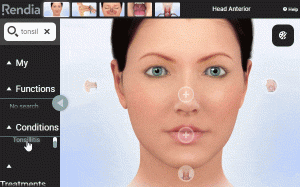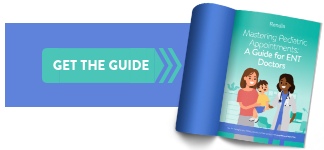Updated guideline offers recommendations for patient education, pain meds, and more
Tonsillectomy is one of the most common surgical procedures in the U.S. The most recent data show that 289,000 ambulatory procedures are performed annually in children age 15 and younger. The American Academy of Otolaryngology–Head and Neck Surgery Foundation (AAO-HNS) has released a 2019 guideline update on Tonsillectomy in Children.
“The information is updated with the best available evidence on indications for tonsillectomy and the management of children before, during, and after surgery,” said Ron B. Mitchell, M.D., who chaired the 2019 update. “Following the key action statements in the guideline is very important because it will ensure the best quality of care in children undergoing tonsillectomy.”
Find out what the AAO-HNS recommends for pediatric tonsillectomy patients, and how patient education factors into providing the best pre- and post-op care.
Patient education for two audiences
The updated guideline puts an increased emphasis on patient education and shared decision-making. Working with pediatric patients means you have two audiences to educate: children and their parents or caregivers. Research shows that 93 percent of the parents of young otolaryngology patients want more information from their child’s doctor, and the majority of them prefer a technology-based mode of information delivery.
Patient education videos can be a way to jumpstart discussions with young patients and their parents.
Using visual animations can serve as a jumping-off point for discussions with young patients and their parents about what tonsillectomy is and why you are recommending it:

Proactively offering information and answering questions can make a big difference in how you are perceived by your patients’ parents, which is the true measure of patient satisfaction in a pediatric population.
Patients and their parents often have similar questions and things they forget to ask, so you or your staff should proactively offer helpful advice for recovery, such as these 10 tips for helping your child recover from a tonsillectomy. Practical tips include having parents pre-measure doses of pain medicine and set an alarm on their phone to remind them to give their child ibuprofen and acetaminophen, alternating every two hours, or as their doctor prescribes.
Key action statements in the updated guideline
The principal indications for tonsillectomy are obstructive sleep disordered breathing (oSDB) and recurrent sore throats. The Tonsillectomy in Children updated guideline includes changes to five of the key action statements from the original guideline and the addition of seven new ones. For example, it advises physicians to take a “watchful waiting” approach to treatment, as opposed to immediately treating children with recurrent throat infection, if there have been fewer than seven episodes in the past year, fewer than five episodes per year in the past two years, or fewer than three episodes per year in the past three years.
The updated guideline on tonsillectomy in children includes changes to previous recommendations as well as the addition of several new ones.
Additional key action statements recommend tonsillectomy for oSDB and OSA.
A common question parents ask is why surgery is necessary, and whether there are any other options. Take the time to discuss the bigger picture. You can explain how the procedure can improve their child’s sleep and quality of life.
The importance of post-op information and follow-up
Many parents may be overwhelmed or anxious prior to and during their child’s surgery, so it’s important to provide clear, concise instructions on post-operative care that they can access when they are ready, or if they need a refresher. This video can help:
What foods patients can eat and what pain medications to take are common concerns parents have following their child’s surgery.
Of particular concern may be what foods their child can eat post-surgery. Also take time to discuss recommended pain medications and when they should be taken. Explain that clinicians recommend ibuprofen, acetaminophen, or a combination of both for pain control after tonsillectomy, rather than codeine. Some parents may not know to avoid giving their child aspirin, as this can lead to an increased risk of bleeding.
You might mention that the updated AAO-HNS guideline includes a strong recommendation against perioperative antibiotics for children undergoing tonsillectomy, and a strong recommendation for a single, intraoperative dose of intravenous dexamethasone (steroids) for these patients.
Remind patients’ parents to schedule follow-up care. Take the opportunity to establish an ongoing relationship by highlighting other services your practice offers, such as frenectomy, hearing tests, allergy treatments, and diagnosis of sleep disorders.
For more tips on treating young patients, download our latest whitepaper, Mastering Pediatric Appointments: A Guide for ENT Doctors.


